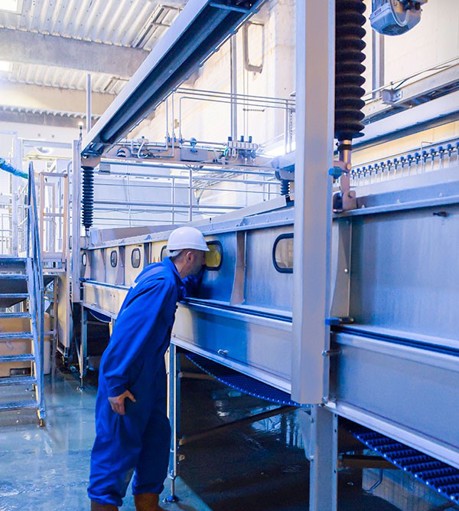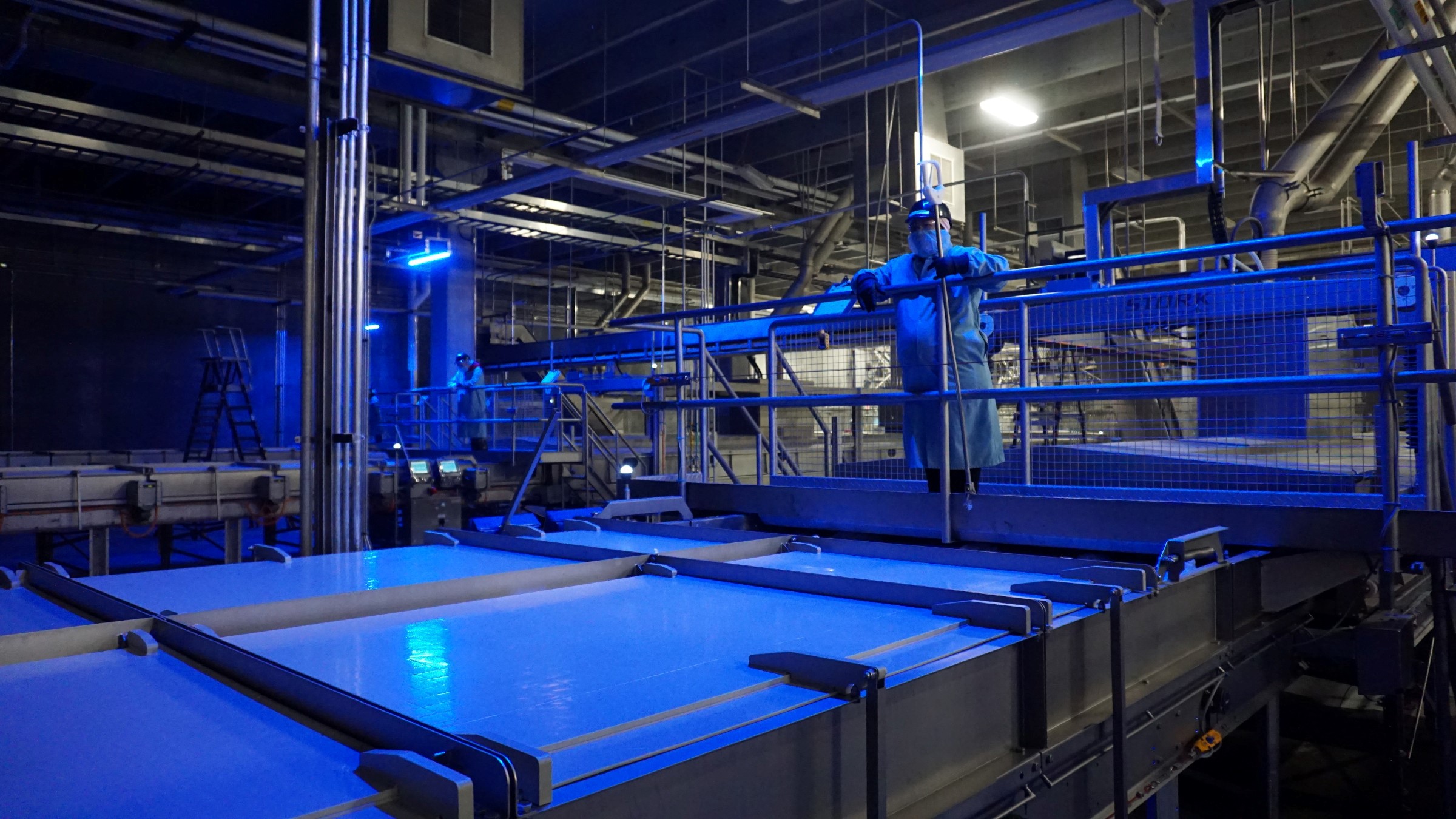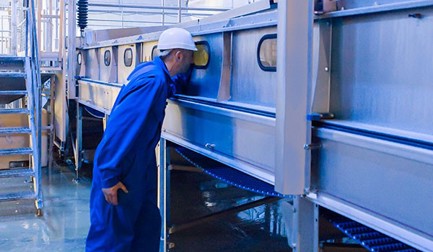3. How has the CAS process changed over the years?
In 2021, Marel celebrated the 25th anniversary of its controlled atmosphere stunning system, having installed its first CAS system in a Belgian plant at the end of 1996.
The first system had two phases. A mixture of CO2 and oxygen anesthetized birds in the first phase; a higher concentration of CO2 stunned them irreversibly in the second phase. When broilers left the system, their hearts were still beating, although they could not recover consciousness. At the time, the use of CO2 and oxygen in a two-phase tunnel in high-volume processing plants was a definite world first.
Some years ago, Marel launched its ATLAS live bird handling system and its CAS SmoothFlow controlled atmosphere stunning system. Both developments were the result of Marel’s many years’ experience handling live birds and using controlled atmosphere to anesthetize them.
With ATLAS, live birds stay in their trays, which are then conveyed in a straight line through the SmoothFlow CAS tunnel. Operators shackle irreversibly stunned birds direct from the trays to the killing line.
Research and development have in time progressed to a smoother anesthetization process, resulting in even better animal welfare. As a consequence, CAS SmoothFlow now has five stages, separated by curtains, where the CO2 content of each stage gradually increases. A decreasing percentage of oxygen is part of the stunning air mix in the first stages.
ATLAS and CAS SmoothFlow are mechanically straightforward. The destacked SmartStack trays follow their way seamlessly through the CAS SmoothFlow chambers. It is an in-line tunnel system with a single conveyor running through it on one level only.
Both systems will handle 15,000 bph and more, giving proof of their superb reliability in high-volume, multi-shift plants in many countries.






